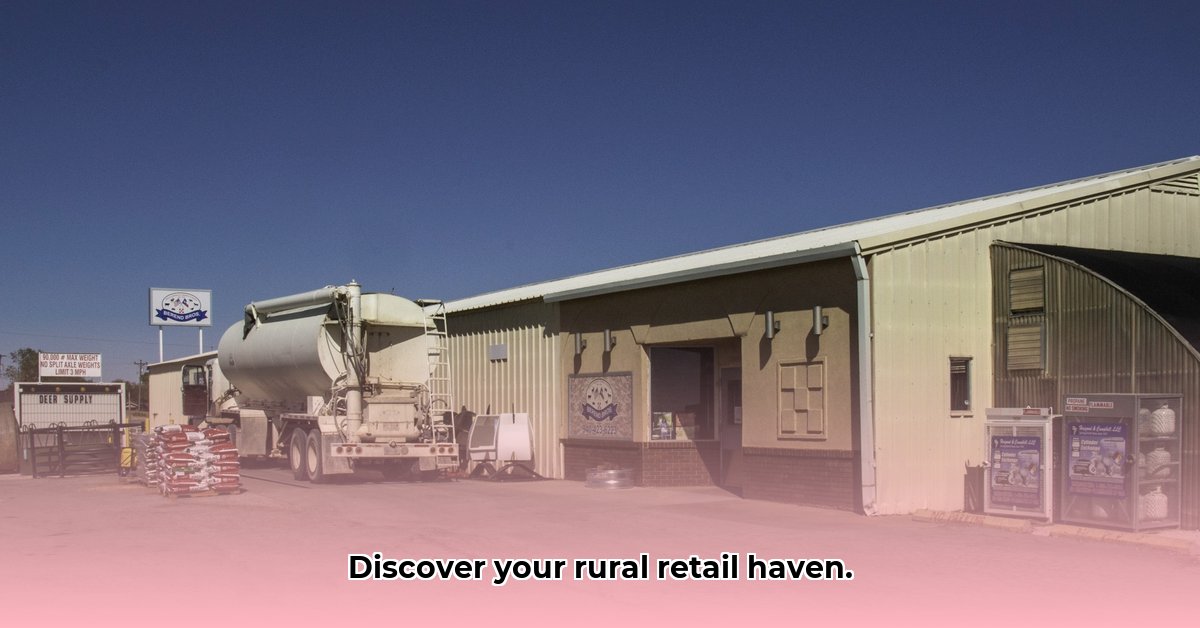
A Case Study of Berend Brothers: A Thriving Rural Retail Model
Berend Brothers in Wichita Falls, Texas, stands as a compelling example of successful rural retail. This case study analyzes their business model, identifies key strengths and weaknesses, and proposes actionable recommendations for continued growth. Their success provides valuable insights for understanding the dynamics of rural markets and building a sustainable, community-focused business.
Company Overview
Berend Brothers operates a retail store in Wichita Falls, Texas, serving the needs of the surrounding agricultural community and broader local population. Their business model is based on a diversified product offering, extending beyond traditional farm supplies to include pet supplies, hunting gear, and other retail goods. This diversification minimizes reliance on any single product category and mitigates market fluctuations. Beyond goods, they offer value-added services like pet grooming, enhancing customer experience and revenue streams.
Business Model Analysis
Berend Brothers' core business model centers on providing a "one-stop shop" experience for a wide range of customers. Their key offerings include:
- Farm Supplies: Catering to the needs of local farmers and ranchers.
- Pet Supplies: Providing a comprehensive selection for pet owners.
- Hunting Gear: Meeting the demands of recreational hunters in the area.
- Other Retail Goods: Offering a mix of everyday necessities and specialized items.
- Value-Added Services: Pet grooming and a self-wash station add to customer convenience and generate additional revenue.
Their target market encompasses a broad spectrum of the local population, including farmers, ranchers, pet owners, hunters, and families. Their revenue streams are diversified across multiple product categories and services, reducing vulnerability to fluctuations in any single market segment.
The competitive landscape includes larger retailers and online competitors. However, Berend Brothers differentiates itself through personalized service, strong community ties, and a convenient location offering a wide selection of goods and services, all within easy reach for locals.
SWOT Analysis
This analysis highlights the key factors contributing to Berend Brothers' success and the challenges they face:
Strengths:
- Diversified Product Portfolio: A wide range of offerings caters to diverse customer needs.
- Strong Community Ties: Personal service and local engagement build customer loyalty.
- Convenient Location: Easy accessibility for local residents.
- Value-Added Services: Pet grooming and self-wash stations increase revenue and enhance customer experience.
Weaknesses:
- Limited Publicly Available Financial Data: Lack of detailed financial information hinders a comprehensive assessment of performance and strategic planning.
- Potential Vulnerability to Economic Downturns: Economic fluctuations can affect consumer spending on non-essential items.
- Reliance on Local Market: Geographic limitations restrict growth potential.
Opportunities:
- Expansion into Nearby Underserved Areas: Exploring neighboring communities could significantly broaden their customer base.
- Online Sales Channels: Developing an online store expands their reach beyond the immediate geographic area.
- Enhanced Marketing and Customer Feedback Mechanisms: Improved marketing and customer feedback systems refine strategies and boost loyalty.
Threats:
- Competition from Larger Retailers: Large retailers pose a significant competitive threat due to their resources and economies of scale.
- Supply Chain Disruptions: Supply chain issues can impact product availability and profitability.
- Economic Instability: Broad economic downturns negatively impact consumer spending and business performance.
Recommendations
To sustain and enhance growth, Berend Brothers should consider the following recommendations:
Short-Term (0-1 year):
- Implement Data-Driven Inventory Management: Analyze sales data to optimize inventory levels, minimizing costs and ensuring product availability.
- Enhance Customer Feedback Mechanisms: Regularly solicit customer feedback through surveys and suggestion boxes to understand unmet needs.
Long-Term (3-5 years):
- Strategic Expansion into Underserved Areas: Conduct thorough market research before expanding to nearby communities.
- Develop an Online Sales Platform: Create a user-friendly online store to access a wider customer base.
- Invest in Employee Training: Enhance employee product knowledge and customer service skills to improve customer retention.
Conclusion
Berend Brothers provides a compelling case study in successful rural retail. By understanding and catering to the specific needs of their community, diversifying their product offerings, and providing exceptional service, they have built a thriving business. Their continued success hinges on strategic planning, adapting to market changes, and leveraging opportunities for expansion and technological advancements. Their model serves as a valuable resource for other rural retailers seeking sustainable growth and community engagement.